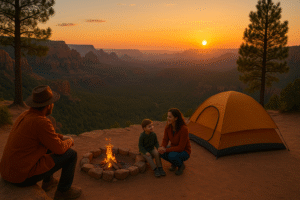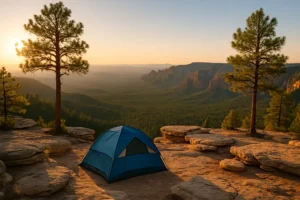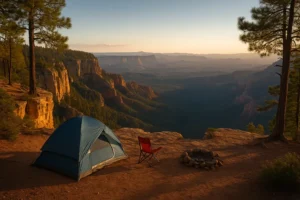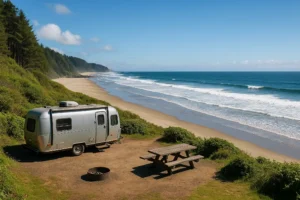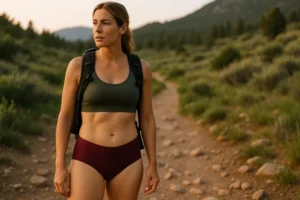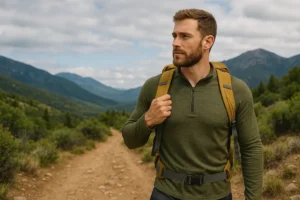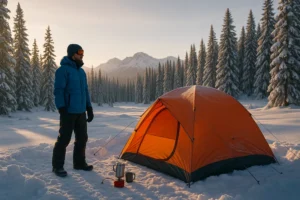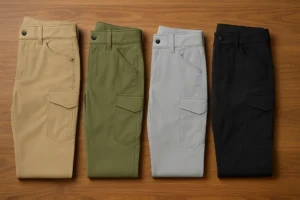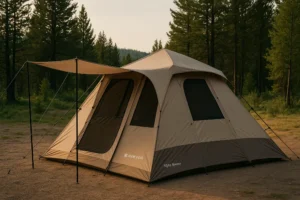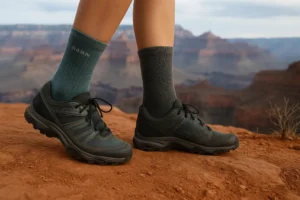Camping is more than just sleeping in a tent—it’s about trading screens for stargazing and routines for adventure. Whether you’re planning a weekend in the woods or a quick escape to a nearby state park, camping offers an unmatched opportunity to reset your mind and reconnect with nature. For first-time campers, the idea can feel both exciting and intimidating.
Forget the wilderness survival shows. You don’t need to rub sticks together or live off berries to have a successful trip. What you do need is a smart game plan, reliable gear, and the right mindset. We’ll walk you through the essentials—from picking your site to cooking your first meal under the stars—so your first outing is smooth, comfortable, and unforgettable.
Choosing the Right Campsite
Location is everything. You wouldn’t book a hotel blindly, so don’t choose a campsite without doing your research.
Start with these basics:
- State and national parks are ideal for beginners. They usually offer clear trails, bathrooms, and often even firewood.
- Use apps like AllTrails or The Dyrt to check site reviews, nearby amenities, and even real user photos.
- Look at distance. If it’s your first time, stay within a 2–3-hour radius of home. Just in case.
Also, think about what kind of experience you want. Quiet forest? Lakeside? Mountains? Pick something that aligns with your comfort and interests. And check the weather. Always.
Tent Talk: Picking Shelter You Can Trust
Don’t make the rookie mistake of picking the cheapest tent on Amazon.
A tent is your portable home. It should handle wind, rain, and bugs. Get one that:
- Has a rainfly (essential during sudden storms).
- Is rated for the right season—3-season tents are great for spring through fall.
- Sleeps more than you think you need. Two people in a two-person tent? It’ll feel like a sardine can. Go for a 3-person tent for two campers.
Practice setting it up at home. Seriously. Your future self, standing in the dark while rain starts falling, will thank you.
Sleeping Right: Mats, Bags, and Comfort
This part is key. A bad night’s sleep can ruin an otherwise perfect trip.
Here’s your starter pack:
- Sleeping bag: Match the temperature rating to the coldest temps you’ll face. If it says 30°F, it’s meant for that temp—but it won’t be cozy at 30°F. It’s survival, not comfort. So plan accordingly.
- Sleeping pad or air mattress: Crucial. Even if you’re young and tough, the ground is colder and harder than you think.
- Pillow: A real one. Or at least a solid inflatable or stuff-sack style. Neck pain is a joy killer.
And always pack an extra blanket or two. Lightweight fleece or insulated ones can make all the difference.
The Camp Kitchen: Food, Fire, and Fuel
Yes, you can eat well while camping. No, it doesn’t have to be all canned beans and trail mix.
Basic gear checklist:
- Portable stove or grill (and extra fuel canisters).
- Lighter + waterproof matches (always bring both).
- Cooler with ice packs.
- Reusable utensils, plates, mugs, and a pan or pot.
- Biodegradable soap + sponge.
Plan simple meals: think tacos, foil-pack dinners, or pasta. Pre-chop veggies at home and pack them in zip bags. Bring snacks. Lots of snacks. And never leave food out—keep it sealed and stored, preferably in your car or a bear-proof container if required.
Fire Building: The Right Way
Fire is primal. It’s also a responsibility.
Here’s the breakdown:
- Use designated fire rings only.
- Start with dry tinder and kindling. Then stack small sticks in a teepee or log cabin style before adding larger logs.
- Keep water or sand nearby to douse it.
- Never leave a fire unattended. Ever.
Oh, and check for burn bans before lighting anything. Many areas prohibit fires during dry seasons.
The Bathroom Situation
This might be your biggest concern—and that’s fair.
If your campsite has bathrooms: great. Bring your own toilet paper, hand sanitizer, and wet wipes.
If not:
- Dig a “cathole” about 6–8 inches deep and at least 200 feet away from water sources.
- Pack out all hygiene products—yes, even TP if you use it.
- Consider a portable camp toilet for comfort and convenience.
It’s awkward at first. Then it’s just part of the experience.
Dress Smart: Clothing for the Outdoors
Layering is the name of the game.
Your camping clothing plan:
- Base layer: moisture-wicking (not cotton).
- Middle layer: insulation (fleece or down).
- Outer layer: waterproof and windproof shell.
Bring an extra pair of socks. Actually—bring two. Damp feet are miserable. And don’t forget a hat, sunglasses, and a pair of reliable hiking boots or trail shoes.
At night, temps can drop hard. A cozy hoodie and long thermal pants go a long way.
Staying Safe (Without Overpacking)
You don’t need to bring your entire medicine cabinet, but you do need a solid first aid kit. Make sure it includes:
- Bandages, antiseptic wipes, antibiotic ointment.
- Pain relievers, antihistamines.
- Tweezers (for splinters and ticks).
- Blister care (moleskin is your friend).
Also pack:
- A map (offline or paper).
- A headlamp (with extra batteries).
- A multi-tool or knife.
- Sunscreen and bug spray.
Let someone know where you’re going and when you plan to return. It’s not paranoia—it’s preparedness.
Keeping Clean in the Wild
Camping doesn’t mean abandoning hygiene. You’ll feel better if you stay at least a little fresh.
Tips:
- Use biodegradable soap for washing hands or dishes.
- Baby wipes work wonders.
- Bring a quick-dry towel.
- Don’t forget deodorant, toothbrush, and floss.
- A bandana can double as a face wipe or even a shower cloth.
If you’re near water, go for a swim—but don’t use soap in natural streams or lakes. Keep nature clean.
Tech vs. Nature: Finding the Balance
Should you bring your phone? Of course. Use it for maps, weather updates, or emergency calls.
But keep it on airplane mode most of the time. Let the silence speak. Listen to the birds, the wind, the distant creek. Real disconnection is rare—and camping gives you permission to take it.
You won’t regret unplugging. Not even for a day.
Packing Tips: What to Bring (And What to Leave)
Here’s the rule: If you’re not going to use it, don’t bring it.
Essential categories:
- Shelter and sleep gear
- Food and cooking equipment
- Clothes and shoes
- Hygiene items
- Safety and tools
- Trash bags (always pack out everything)
Pro tip: Use a checklist. It helps prevent both overpacking and forgetting the essentials. And always leave space in your car for firewood or water refills.
Unexpected Lessons You’ll Learn
Your first camping trip might not go perfectly. That’s okay.
You might forget bug spray. Or burn your dinner. Or get woken up by a raccoon rifling through your granola.
That’s the point. It’s part of the learning curve. You’ll laugh about it later.
Camping teaches patience. Adaptability. And how little you truly need to feel happy and full. It’s not about the Instagram-worthy tent setup. It’s about feeling grounded. Present. Alive.
Conclusion: Your First Night Under the Stars
Camping is less about escaping life and more about finding a different pace to it. One where you pay attention. Where the sun going down actually means something. Where food tastes better and time moves slower.
Start simple. Go with people you trust or even solo if you’re prepared. Don’t expect perfection. Just aim for connection—with nature, with those around you, and with yourself.
Your first trip might change you. All you need to do is take the first step into the woods and pitch your tent.
Let the adventure begin.
FAQs: Camping 101 – A Guide for the First Time Camper
A beginner should pack a tent, sleeping bag, sleeping pad, portable stove, food, water, headlamp, and a basic first aid kit. Layered clothing and weather-appropriate gear are also essential.
Start with state or national parks, which offer marked trails, restrooms, and reliable safety measures. Look for locations within a short drive from home for convenience.
Solo camping is safe with proper preparation, communication, and gear. Always inform someone of your location and return time, and avoid remote or risky areas your first time out.
A 3-season tent with a rainfly and solid ventilation is ideal for beginners. Choose one slightly larger than your group size for added comfort.
Use biodegradable soap, wet wipes, and a quick-dry towel. Bring basic hygiene items like a toothbrush, deodorant, and hand sanitizer to stay fresh.
Yes, but consider using airplane mode to conserve battery and enjoy a digital detox. Keep it charged for emergencies and offline maps.
Use a portable stove or grill and prepare simple meals like foil packets, pasta, or pre-marinated proteins. Don’t forget to pack fuel, utensils, and a cooler with ice.


